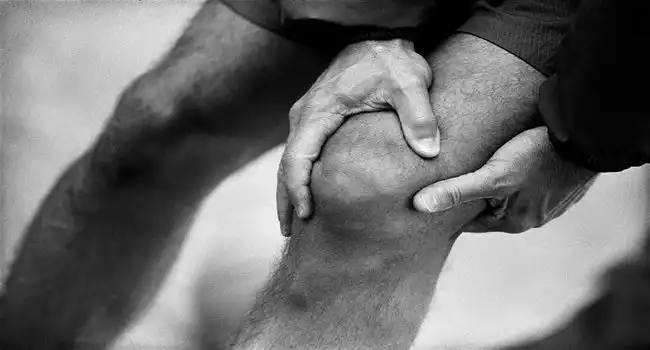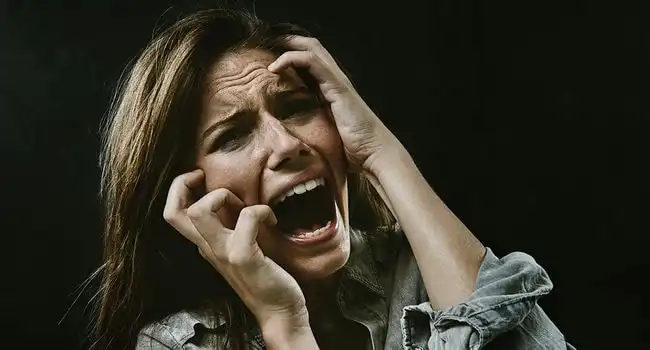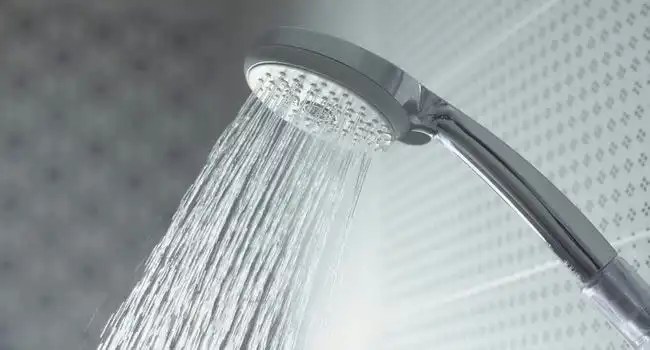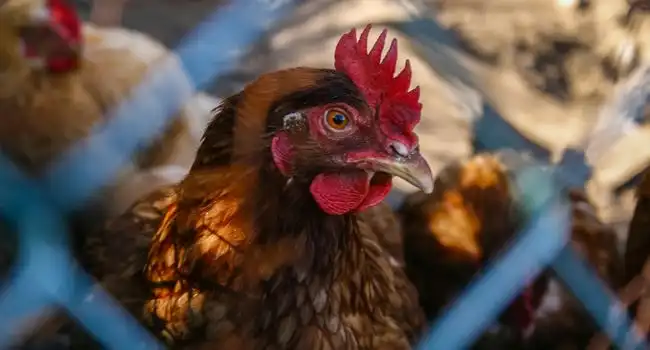Phobias are an intense and irrational fear of something. People with phobias feel a strong sense of dread, panic, or terror when they encounter their fear. These fears can be so strong that they disrupt daily life and can cause a person to avoid certain situations. While everyone has fears, phobias are extreme and can be disabling. Common phobias include fear of heights (acrophobia), fear of public speaking (glossophobia), fear of enclosed spaces (claustrophobia) or fear of spiders (arachnophobia). But there are phobias that you might have never heard of. Here are 10 Strangest Phobias that people have.
10- Genuphobia
Fear of Knees

Photo Credit: Verywellmind
Genuphobia is an irrational fear of knees. It is characterized by excessive anxiety and fear when confronted with knees or activities involving the knee area. Symptoms of genuphobia can include avoidance of activities or places where knees are present, extreme anxiety when confronted with knees, physical reactions such as increased heart rate and sweating, and negative thoughts and feelings associated with knees.
People with genuphobia may find it difficult to participate in activities involving their knees, such as running, playing sports, or simply sitting with their legs crossed. They may also avoid places where knees are visible, such as swimming pools, beaches, and gym classes. In some cases, the fear may be so severe that it affects the person’s day-to-day life, making it difficult for them to live a normal life.
9- Phobophobia
Fear of Phobias

Photo Credit: Foxnews
Phobophobia is an intense fear of phobias and the symptoms associated with them. It is an anxiety disorder that can cause distress and avoidance of any situation or object that could trigger a phobic reaction. People with phobophobia are often aware that their fear is irrational but are unable to control it. Symptoms of phobophobia include intense fear, avoidance, difficulty breathing, rapid heartbeat, sweating, shaking, and feeling like one is going to faint or die. Treatment usually involves cognitive behavioral therapy, relaxation techniques, and medications such as antidepressants. Self-help techniques such as mindfulness and exposure therapy can also be beneficial.
8- Taphephobia
Fear of Being Buried Alive

Taphephobia is a fear of being buried alive. It is a form of specific phobia that manifests itself in different ways. People may experience physical symptoms such as increased heart rate, sweating, shaking, difficulty breathing, and nausea. Additionally, they may feel an intense sense of dread and panic. The fear can be so strong that it can cause someone to avoid activities or places where they fear being buried alive. Furthermore, taphephobia can cause someone to have nightmares or intrusive thoughts about being buried alive. To make matters worse, some people may even experience anxiety when thinking about death or burial in general. Consequently, this can lead to emotional distress and avoidance of activities or places where they fear being buried alive. In conclusion, taphephobia is a real and often debilitating fear that can cause significant distress and anxiety.
7- Ablutophobia
Fear of Bathing

Photo Credit: Medium
Ablutophobia is an intense fear of bathing, washing, or cleaning. It is an irrational fear that can cause panic and terror in those who experience it. People with ablutophobia may avoid washing, bathing, or cleaning themselves or their surroundings. This fear can also cause them to fear being around people who are clean or being in places where cleaning is done. Furthermore, people with ablutophobia may also experience physical symptoms such as nausea, sweating, shaking, and crying. Additionally, they may be overly concerned with germs and dirt. Consequently, the fear of bathing, washing, or cleaning can significantly interfere with daily life. Nonetheless, with the right treatment, ablutophobia can be managed.
6- Nomophobia
Fear of No Mobile

Photo Credit: The Next Web
Nomophobia, the fear of being without a mobile phone, is becoming an increasingly common phenomenon. It is a type of specific phobia, marked by an irrational and excessive fear of losing one’s phone. People suffering from this phobia experience panic and anxiety when their phone is not in their possession. In severe cases, it can lead to symptoms such as sweating, trembling, and a racing heart. Nomophobia can also cause difficulty in concentrating and sleeping. Subsequently, it can lead to social isolation and depression. Moreover, it can interfere with work, relationships, and academic performance. Consequently, it is important to understand the implications of nomophobia and take steps to address it. Thus, it is essential to recognize and address this problem in order to ensure balanced mental health.
5- Ombrophobia
Fear of Rain

Photo Credit: Therapy Hunter
Ombrophobia is the fear of rain. It is an anxiety disorder that affects people of all ages. It is characterized by an intense fear of being exposed to rain or of the rain itself. Symptoms of ombrophobia include shortness of breath, sweating, trembling, heart palpitations, and feeling of overwhelming panic. Individuals with ombrophobia often try to avoid rain at all costs, even if it means staying indoors. They may also go to extreme lengths to ensure that they will never be exposed to rain. Ombrophobia can also lead to physical symptoms such as headaches, nausea, and vomiting. If an individual experiences a panic attack due to ombrophobia, it is important to seek professional help. Therapy, medications, and lifestyle changes can be used to treat ombrophobia and help those affected to lead a normal life.
4- Arachibutyrophobia
Fear of Peanut Butter

Photo Credit: Healthline
Arachibutyrophobia is one the strangest phobias, is an irrational fear of peanut butter sticking to the roof of one’s mouth. This fear can cause an individual to experience an extreme stress reaction when faced with the prospect of eating a peanut butter-containing food. Symptoms may include a racing heart, nausea, and difficulty breathing. In extreme cases, an individual may experience a full-blown panic attack. To cope with the fear, it is important to understand the cause and to learn relaxation techniques. A therapist can also help to develop strategies to address the fear. With the right approach, an individual can overcome arachibutyrophobia and enjoy eating peanut butter again.
3- Alektorophobia
Fear of Chickens

Alektorophobia is one of the strangest phobias, including the fear of chickens. It is an irrational fear that can lead to anxiety and distress. Those who suffer from alektorophobia experience extreme panic when they see a chicken or hear its sound. The fear may be so severe that it can limit everyday activities. It can also cause physical symptoms such as sweating, nausea, and an increased heart rate. Cognitive-behavioral therapy is often used to help those suffering from alektorophobia learn to manage their fear. Exposure therapy is also used to gradually increase the sufferer’s comfort level with chickens. Relaxation techniques such as deep breathing and mindfulness can also be helpful in managing the fear.
2- Chorophobia
Fear of Dancing

Chorophobia is an irrational fear of dancing. People with chorophobia may experience extreme anxiety when they are asked to dance, even if it is with a partner or in a group. They may feel embarrassed or anxious to move their body in any way. They may feel like they are being judged or that they are not good enough. In some cases, chorophobia can be so extreme that it can cause physical symptoms such as nausea, sweating, racing heart, or trembling. It can also lead to avoidance of any activities or situations that involve dancing. Treatment for chorophobia includes cognitive-behavioral therapy, desensitization, relaxation, and hypnosis.
1- Pogonophobia
Fear of Beard

Pogonophobia is one of the strangest phobias is an irrational fear of beards. People who suffer from this phobia are scared of looking at, touching, or being near a beard. Symptoms of this phobia include sweating, trembling, increased heart rate, shortness of breath, and nausea. Pogonophobia can be caused by a traumatic experience with a bearded person, or a fear of germs and dirt associated with the beard. Treatment for this phobia typically involves cognitive-behavioral therapy and exposure therapy, which is gradually exposing the individual to the feared object in a safe and controlled environment. People who suffer from this phobia can also find relief through relaxation techniques such as deep breathing and visualization.


